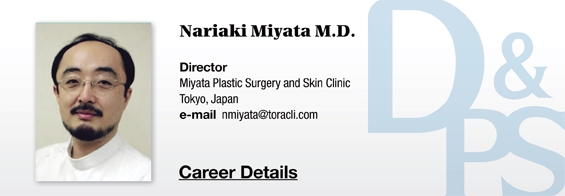
It is difficult to generalize on the performance of IPL devices. Depending on the doctor’s personal preferences, the performance can differ. Affordable, high-performance Korean IPL devices are becoming popular. Particularly well-established Korean manufacturer’s products are popular. Chinese devices, on the other hand, are not commonly chosen regardless of affordability.
IPL treatments are often carried out by nurses. In such cases, the devices with convenience of use are preferred. When doctors themselves perform IPL treatments, different aspects are considered when choosing the device.
What we think is melasma, that is lentigo senilis, can actually be various other types of lesions which may not respond to traditional laser treatments. Japanese patients cleanse their skin too thoroughly and excessive friction can worsen chloasma. It is important to instruct patients on the correct ways of caring for their skin. The incidence of chloasma in middle-aged women is about 20-30%. Forceful rubbing, excessive cleansing or frequent facials, etc. may be increasing this rate. Particularly the heavy make-up many Japanese women wear may also damage the skin and cause chloasma.
Before starting treatment, I try to help my patients start healthy skin care habits. In some cases, I recommend skin care treatments such as electropolation, etc. before the actual treatment. Many patients complaining of brown, dark red spots and can improve drastically from skin care alone without laser. They may not all be cases of chloasma but there are many Japanese patients that present chloasma and similar conditions.
[Advertisement] MAGNUM(Q-switched Nd:YAG Laser) – Manufacturer: (www.i-dana.com)]
There is a heightened awareness for chloasma in Japan and this may be driving up the health insurance reimbursement rate. Tranexamic acid is available over-the-counter as an effective internal medication for chloasma. And the public became familiar with the word “chloasma” due to aggressive advertising. Many are now aware that melasma and chloasma are different. Some patients even keep insisting that they have chloasma when the doctor have diagnosed it otherwise.
Many patients also believe that chloasma is curable because they are misled by advertisements. Patients are disappointed when I tell them that certain skin conditions or sun exposure can immediately exacerbate chloasma and daily effort is needed to prevent recurrence. I believe clear communication with patients regarding chloasma determines the success of treatment in Japan.
In Japan, acquired, bilateral nevus of Ota-like macules or acquired dermal melanocytosis (ABNOM, ADM) are rather frequently discovered. When misdiagnosed as chloasma, these conditions do not respond to treatment. Laser is effective in ABNOM and once correctly diagnosed, it can be treated. Various melanin lesions develop in our middle age. And very often, multiple types of lesions coexist. When chloasma is dominant and accompanied with melasma (lentigo senilis), lentigo, or ABNOM, etc., one needs to treat each condition with a corresponding appropriate method. And the order in which these treatments are carried out is important. Spot removal of melasma lesions with Q-switched laser can cause PIH in areas overlapped with chloasma. Chloasma should be removed first before localized treatment of melasma. Using a camera with LED lighting or magnifying lens allows visualization of chloasma that is not visible with the naked eye. Using laser without thorough examination can cause unexpected complications due to undiscovered chloasma.
Therefore, correct diagnosis is important as well as identifying and correcting patients’ skin care habits. Often, various treatments have to be used over long term.
The aging process continues in everyone and cannot be reversed. Pigmented lesions such as melasma can improve temporarily only to return elsewhere later. It is important to perform a long-term follow up where treatment as well as UV protection, avoiding dryness, correct skin care habits, etc. and prevention are communicated.
-To be continued-




















